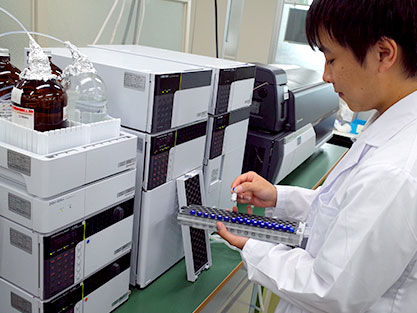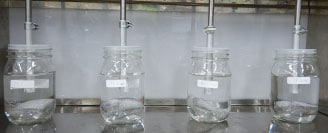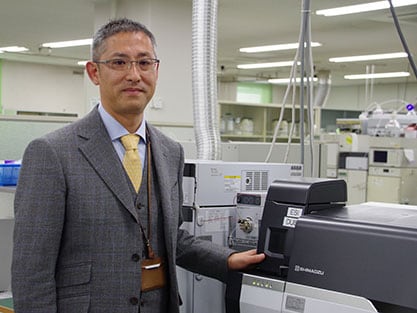
Plastics are used everywhere, in products from polyethylene terephthalate (PET) beverage bottles and packaging, to office and household supplies. Each year an estimated eight million tons of plastic waste flows into the seas and oceans around the world. Unless countermeasures are implemented, the weight of plastics in the oceans is predicted to exceed the weight of fish by the year 2050. Many people have probably seen videos about the marine plastics problem, showing images such as finding large amounts of plastics in the stomachs of dead whales and seabirds or of microplastics drifting in the ocean. For this article, we talked to Makoto Yasojima, Deputy General Manager of the Environment Division Department at Shimadzu Techno-Research, Inc., who is working on identifying the issues involved. He explained that “To deal with the microplastics problem, it is important to properly assess and define the issue based on scientific knowledge, so we can determine what the fundamental problem is and how it occurs.”
Shimadzu Techno-Research is a Shimadzu Group subsidiary established in 1972. The company offers contract analysis, measurement, and research services for customers in various fields, based on analytical and measuring technologies from across the entire Shimadzu Group. Shimadzu Techno-Research has focused on environmental fields ever since the company was established and at a time when environmental pollution was becoming a significant problem. Consequently, it has been actively involved in investigating and conducting research into environmental pollutants, such as dioxins. Today, the business has expanded into a variety of fields, including automotive and life science fields.

Though there is no strict definition of the term “microplastics,” it generally refers to tiny pieces of plastic less than 5 mm in size that are dispersed in rivers, lakes, oceans, and other areas of the environment. There are basically two types of microplastics. One type is “primary microplastics,” which are plastics originally made as very small pieces that are used as raw materials for a wide variety of products. One example is “microbeads,” which are used in facial cleaning products or industrial polishing agents. The other type is “secondary microplastics,” which are derived from plastic waste that is released into the environment and then broken down into small pieces by external factors, such as the physical effects of ultraviolet rays or waves, and temperature changes. The problem with microplastics is not only based on concerns about how the plastic material itself can affect the natural environment or organisms, but also how the whole food chain of organisms ingesting hazardous chemical substances adsorbed to microplastics can affect the overall ecosystem.
Shimadzu Techno-Research offers extensive experience and a long track record, achieved from developing chemical substance analytical techniques and conducting fact-finding surveys thus far, for example. Currently, it is using that wealth of experience and track record to survey and research the existence of a “vector effect” of ocean microplastics to act as a medium for transporting chemical substances, not only for petroleum-derived plastics, but also biodegradable plastics, to which regular plastics are increasingly being converted. Such attached chemical substances are investigated using LCMS, GCMS, and other analytical instruments from Shimadzu Corporation. Deputy General Manager Yasojima spoke passionately about how he hopes that such research will “support the appropriate use of biodegradable plastics in society through analytical chemistry.”
Also, China’s restrictions on the importation of waste plastics since December 2017 have prompted efforts to increase the recycling of plastics within Japan, rather than exporting plastic waste abroad. Furthermore, measures are being advanced to recycle or reuse previously used plastics, especially those used in automobiles. “Impurities, chemicals, or other non-plastic substances contained in or attached to plastic waste can interfere with efforts to recycle or reuse the plastic, but Shimadzu Techno-Research is also able to conduct detailed investigations of such contamination in recycled products.” In this way, Shimadzu Techno-Research is also involved in researching the recycling and reuse of waste plastics.
Mr. Yasojima also talked about the company’s outlook for the future, saying “It is important to assess not only the microplastics problem, but also various other environmental problems, objectively based on sound scientific knowledge. Therefore, we remain committed to contributing to society by using analysis to provide accurate data that will lead to solving challenges throughout the world.”
In fact, the entire Shimadzu Group is committed to continuously contributing to society through science and technology.

(Interview held on Mar. 5, 2020)